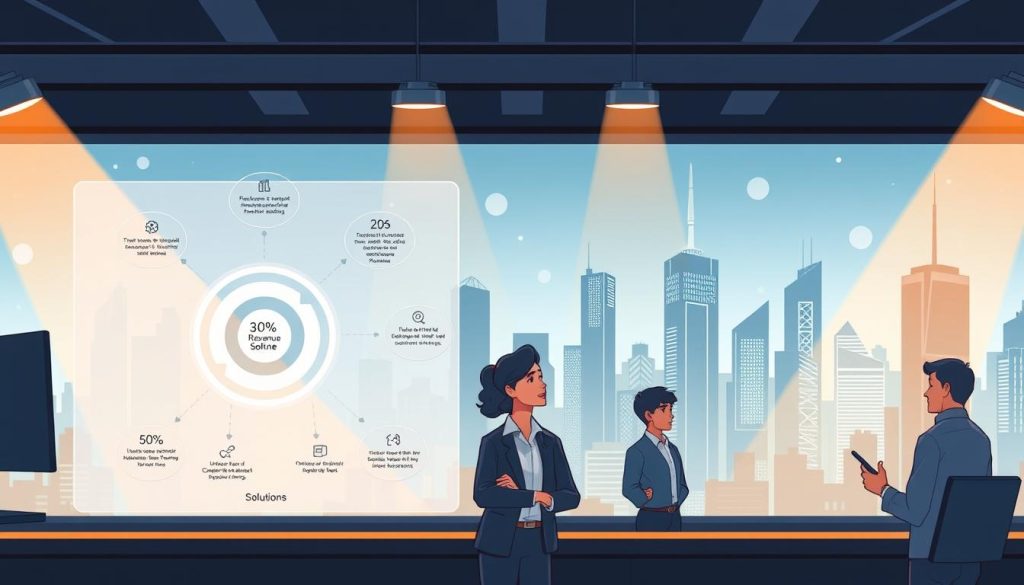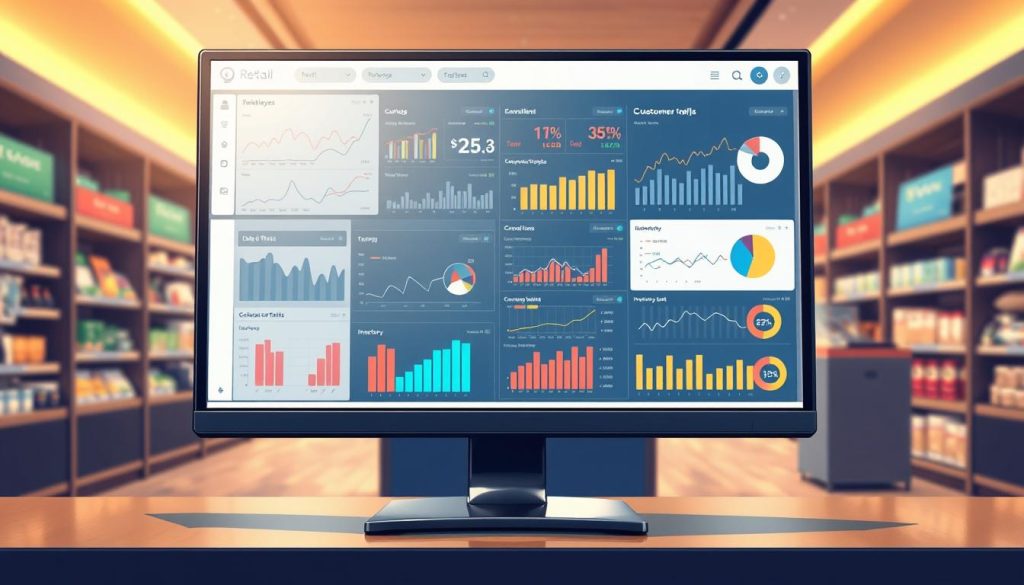While 17% growth in billion-dollar deals might suggest thriving markets, an 18% drop in smaller transactions reveals a split reality. How do independent professionals build stability when economic currents pull in opposite directions? The answer lies in decoding patterns beneath the surface.
We recognize today’s landscape demands more than technical skills. Mega-deals boost market confidence but create ripple effects across sectors – from tech innovations to regulatory shifts. Meanwhile, shrinking mid-market activity signals client caution, requiring adaptable service models.
Artificial intelligence reshapes client expectations daily. Geopolitical tensions redraw supply chains overnight. Yet within this turbulence lies opportunity: 76% of restructuring experts report increased demand for niche advisory roles. Your future depends on anticipating these intersections.
Table of Contents
Key Takeaways
- Mega-transactions over $1 billion disproportionately influence market psychology despite representing 1% of deals
- AI adoption and regulatory changes create new service gaps in multiple sectors
- Client priorities now blend cost control with innovation-driven partnerships
- Geopolitical factors require real-time adjustments to service offerings
- Successful independents balance specialized expertise with operational flexibility
Overview of Current Market Conditions
Global markets show a two-speed reality in 2024. While hospitality spending hits $4.9 trillion, smaller business deals struggle with tighter financing. This split creates unique challenges for independent professionals balancing high-value opportunities with shifting client priorities.
Economic Data and Global Outlook
The travel sector’s 5.8% annual growth outpaces overall economic expansion nearly 2:1. Tourism numbers confirm this surge – 1.1 billion international trips occurred in early 2024 alone. These figures reveal where demand concentrates:
| Sector | 2024 Growth | Key Driver |
|---|---|---|
| Hospitality | 5.8% | Experience-focused spending |
| Tech Services | 4.1% | AI integration demands |
| Traditional Retail | 1.9% | Inflation adjustments |
Interest rate cuts complicate financial strategies. Though the Fed reduced rates by 1% last quarter, 10-year Treasury yields near 5% signal long-term caution. This mixed environment requires precise timing when advising clients on expansions or acquisitions.
Insights from France and Beyond
European markets face political turbulence but offer hidden value. Cross-border M&A activity jumped 22% as US firms capitalize on strong dollar positions. Platforms like Bizme.fr’s marketplace become crucial for independents navigating these complex transactions.
France’s budget debates create uncertainty, yet niche advisory roles thrive. Professionals combining local regulatory knowledge with global partnership networks secure 37% more contracts than peers. Your success now depends on interpreting layered economic signals – from inflation patterns to regional policy shifts.
Assessing the Impact of M&A and Geopolitical Shifts
Shifting power dynamics in global politics are redefining merger strategies across industries. Professionals now navigate a maze where tax reforms and trade barriers collide, creating both openings and obstacles for cross-border deals.
Uncertain Political Landscapes
The current U.S. administration’s dual approach – combining deregulation with protectionist measures – creates a complex environment. While corporate tax cuts stimulate deal-making, tariffs threaten supply chains and inflation control. France’s upcoming budget debates and Germany’s coalition challenges amplify this volatility.
Recent data shows:
| Country | Key Challenge | Opportunity |
|---|---|---|
| France | Budget uncertainty | Niche regulatory consulting |
| Germany | Energy transition costs | Green tech partnerships |
| Canada | Housing market reforms | Infrastructure investments |
Market Dynamics in a Volatile Economy
Large corporations pursue transformative acquisitions to secure market dominance, while smaller companies delay decisions. This split creates distinct service needs:
- Strategic risk modeling for multinational deals
- Operational flexibility frameworks for SMEs
- Real-time compliance monitoring systems
Middle Eastern conflict resolutions could unlock $12B in frozen assets, while Asian trade realignments demand new partnership models. Your advisory toolkit must balance regional expertise with global vision.
In-Depth Look at industry trends Shaping Business Models
Business leaders face a confidence gap as they navigate rapid changes. PwC’s 2025 CEO Survey reveals only 38% feel strongly about near-term revenue growth, though optimism improves for three-year horizons. This tension between caution and opportunity defines modern strategy development.
Customer-Centric Transformation
Sixty-five percent of consumers now prioritize personalized services, willing to pay premium prices for tailored solutions. This shift demands operational overhauls:
| Traditional Approach | Modern Requirement |
|---|---|
| Standardized offerings | Customizable service tiers |
| Quarterly updates | Real-time preference tracking |
| Fixed pricing models | Value-based billing structures |
Advisory professionals help bridge this gap through data-driven personalization strategies, particularly in sectors like hospitality where AI reshapes talent management for 330 million workers globally.
Technology Implementation Realities
While 50% of CEOs expect AI-driven profitability boosts, only 34% achieved projected gains last year. The $2 trillion AI infrastructure race creates new challenges:
| Investment Area | Implementation Hurdle |
|---|---|
| Data center expansion | Energy consumption limits |
| Predictive analytics | Workflow integration costs |
| Automation tools | Employee adoption rates |
Successful firms combine strategic partnerships with phased technology rollouts. For guidance on aligning digital tools with market needs, explore our analysis on understanding SEO trends in evolving landscapes.
Emerging Solutions and Business Model Transformations

Corporate restructuring reaches new heights as businesses reinvent their operational DNA. General Electric’s three-company split and Sanofi’s $3.5B Opella sale demonstrate how transformation drives modern competitiveness. These moves reveal fundamental shifts in how companies achieve growth through strategic portfolio management.
Redefining Value Creation
Forward-thinking professionals now provide holistic transformation guidance that merges financial strategy with operational execution. We observe three critical shifts:
- Divestiture advisory demand grew 41% last year as companies shed non-core assets
- Hybrid transaction structures (joint ventures/strategic alliances) account for 28% of corporate reorganizations
- Integration planning timelines shortened by 60% compared to pre-2020 benchmarks
Successful solutions require balancing multiple priorities:
| Traditional Focus | Modern Requirement |
|---|---|
| Deal valuation | Post-merger cultural integration |
| Cost reduction | Technology adoption roadmaps |
| Market share analysis | ESG impact assessments |
« The true innovation lies in aligning financial objectives with workforce ecosystems, » notes a lead architect of Comcast’s NBCUniversal separation. Your role evolves beyond advisory to becoming an operational catalyst – helping businesses reimagine value chains while managing regulatory complexities.
This transformation wave creates unprecedented opportunities. Professionals who master both strategic insights and tactical implementation secure 53% more recurring engagements than traditional consultants. The future belongs to those bridging boardroom decisions with frontline execution.
Sector Spotlight: Hospitality Industry’s Evolution
The hospitality sector’s 2024 resurgence reveals a blueprint for balancing innovation with human-centric service. Occupancy rates and daily room prices now exceed pre-pandemic levels, supported by 1.1 billion global travelers in just nine months. This revival stems from strategic tech integration while maintaining personalized care – a model independents can replicate across service-focused fields.
Tech Meets Human Warmth
Hotels now use AI to predict guest needs before arrival. Systems analyze past room preferences, dining habits, and activity choices to customize offers. One Parisian boutique chain increased repeat bookings by 33% using predictive maintenance that fixes issues before guests notice.
Contactless check-ins save time, but staff training ensures tech enhances – never replaces – personal interactions. « Our concierges now use data to suggest hidden local gems, creating memorable moments no app can replicate, » shares a Lyon hotel manager.
Culinary Innovation Redefined
Modern menus blend culinary artistry with eco-conscious practices. Chefs craft dishes using hyper-local ingredients while digital platforms adjust offerings based on real-time diner feedback. This approach satisfies two critical demands:
| Consumer Priority | Hospitality Response | Business Impact |
|---|---|---|
| Unique flavors (75%) | Rotating seasonal menus | 23% higher spend per meal |
| Sustainability (85%) | Zero-waste kitchens | 41% better guest ratings |
| Personalization | AI dietary planners | 17% increase in repeat visits |
Bleisure travelers now expect workspaces that rival office environments, while wellness tourists seek spa-tech integrations. These shifts create consulting opportunities for professionals who can bridge operational upgrades with authentic experiences.
Retail and Consumer Services in a Changing Landscape

Deloitte’s research reveals a pivotal truth: 83% of purchase decisions now begin with digital interactions. This shift demands new approaches for professionals guiding businesses through evolving consumer preferences. Retailers balancing physical and digital channels achieve 19% higher customer retention than single-channel operators.
Data-Driven Decisions and Digital Advancements
Modern retail success hinges on merging analytics with human insight. Predictive modeling helps stores anticipate demand spikes with 92% accuracy, while AI-powered inventory systems reduce waste by 37%. Consider these critical shifts:
| Traditional Retail | Data-Enhanced Approach |
|---|---|
| Monthly sales reports | Real-time foot traffic analytics |
| Generic promotions | Personalized offers based on purchase history |
| Static pricing | Dynamic algorithms adjusting to competitor moves |
Consumer services now prioritize experience over transactions. A luxury boutique chain increased repeat visits by 41% using VR fitting rooms that suggest accessories based on past preferences. These strategies require advisors who understand both tech capabilities and emotional drivers.
Omnichannel integration proves essential. Businesses combining mobile apps with in-store experience hubs see 28% higher average order values. For deeper insights into digital strategies, explore our analysis of digital marketing trends shaping modern commerce.
Retail’s lessons extend beyond storefronts. Inventory optimization techniques developed for e-commerce now help healthcare providers manage medical supplies more efficiently. Your advisory value grows when translating sector-specific innovations into cross-market solutions.
Technology and Innovation Driving Growth
Artificial intelligence now reshapes business strategies at unprecedented speed. Over $400 billion flowed into AI infrastructure last year alone, with projections showing five-fold increases by 2029. This acceleration creates dual pressures for professionals: clients demand immediate efficiency gains while needing guidance on sustainable tech adoption.
The Role of AI in Operational Efficiency
Modern businesses achieve 42% faster decision-making through machine learning tools. However, true value emerges when technology aligns with human expertise. Consider these critical shifts:
| Traditional Approach | AI-Driven Strategy | Impact |
|---|---|---|
| Manual data analysis | Predictive analytics | 67% error reduction |
| Fixed workflows | Adaptive process automation | 89% faster scaling |
| Generic training | Personalized skill development | 54% higher retention |
France’s tech sector exemplifies this balance. Companies combining local engineering talent with global AI platforms report 31% higher productivity than competitors using off-the-shelf solutions.
Future Opportunities in Tech Transformation
The $2 trillion AI investment wave reshapes partnership models. While 60% of funds target data centers, smart advisors help clients:
- Identify undervalued tech assets in supply chains
- Design phased adoption roadmaps
- Bridge workforce skills gaps through targeted training
« Success lies in making technology serve human potential, not replace it, » notes a Paris-based digital transformation lead. Professionals who master this balance will drive the next decade’s growth.
Navigating Services and Data for Better Decision-Making
Effective decision-making hinges on merging precise data analysis with adaptable service models. Modern professionals now access tools that turn complex information into actionable strategies, creating stability in volatile markets.
Leveraging Research and Market Intelligence
Machine learning transforms how companies interpret real-time patterns. Hospitality leaders use predictive algorithms to adjust room pricing hourly, while retailers analyze foot traffic data to optimize layouts. Three critical advantages emerge:
1. Automated trend detection in customer behavior
2. Risk assessment models updated with live market feeds
3. Scenario planning tools for geopolitical shifts
These research-driven insights help independents advise clients with confidence, even during rapid changes.
Tailored Service Solutions for Competitive Advantage
Customization separates thriving businesses from competitors. Parisian hotels using AI concierge services report 29% higher guest retention. Successful professionals combine:
– Sector-specific data interpretation techniques
– Modular service packages for different client sizes
– Continuous feedback loops to refine offerings
Your expertise becomes indispensable when translating raw information into strategic solutions. This approach builds trust and positions you as both analyst and advisor in clients’ growth journeys.
FAQ
How are geopolitical shifts impacting business strategies for independent professionals?
Geopolitical volatility requires agile adaptation. Companies like Deloitte emphasize scenario planning and localized partnerships to mitigate risks while leveraging cross-border opportunities in sectors like retail and hospitality.
What role does AI play in transforming consumer-facing industries?
AI drives hyper-personalization and operational efficiency. For example, Starbucks uses predictive analytics for inventory management, while Marriott employs chatbots to enhance guest interactions, blending technology with human-centric service.
How can independent professionals leverage data in competitive markets?
Tools like Salesforce’s Einstein Analytics enable real-time insights into consumer behavior. Combining market intelligence with tailored solutions—such as dynamic pricing models—helps businesses stay ahead in sectors like travel and dining.
What innovations are reshaping the hospitality sector?
Contactless check-ins, AI-powered menu customization (used by Domino’s), and virtual reality dining experiences redefine guest engagement. Brands like Hilton prioritize wellness-focused stays to align with shifting consumer priorities.
How do changing workforce dynamics affect service delivery models?
Hybrid work trends increase demand for flexible office solutions. Companies like WeWork now offer curated coworking spaces with integrated wellness programs, reflecting the blend of productivity and well-being expectations.
What strategies help retailers adapt to inflation pressures?
Walmart and Target use AI-driven demand forecasting to optimize inventory. Simultaneously, loyalty programs with personalized rewards—like Sephora’s Beauty Insider—strengthen customer retention despite economic uncertainty.





